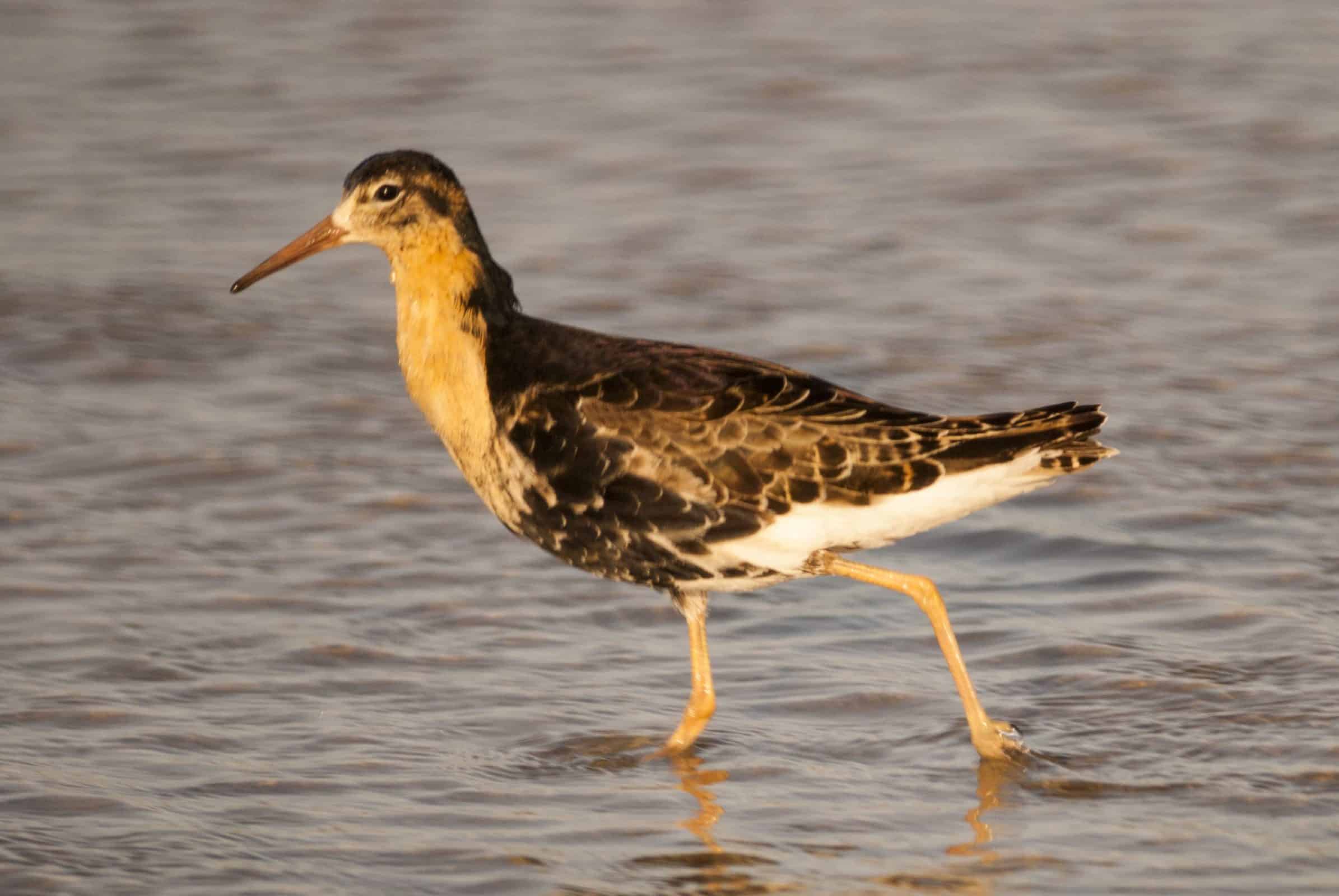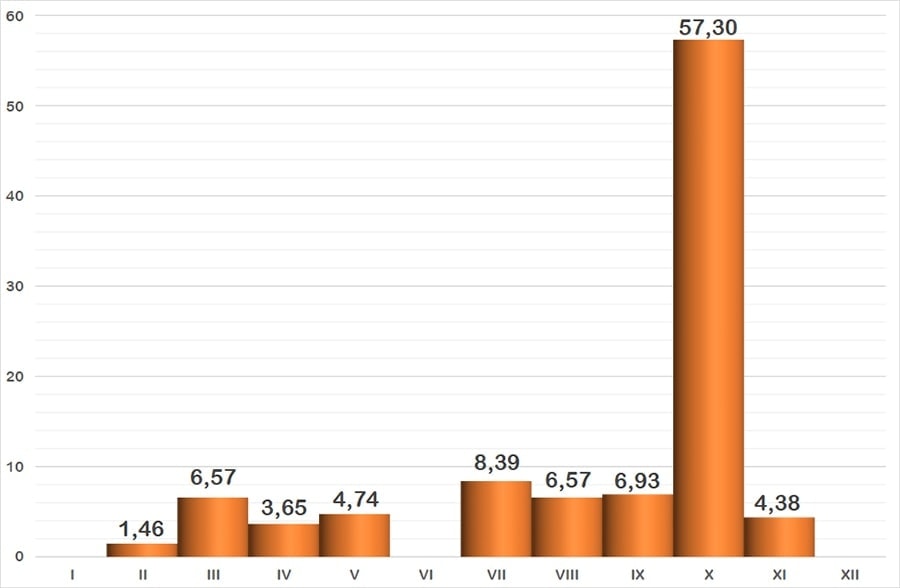It has a remarkable sexual dimorphism, the female is up to 20% smaller than the male and in nuptial plumage the male develops a striking and peculiar plumage formed by an erectile ruff and auricular bows that combine black, purple, white, brown and ochre and that play a very important role during the mating season, which it uses in the nuptial dances resembling a combat giving them their Spanish name: ‘Combatiente’. The legs show a variation from orange to greenish grey, which it shares with the less striking female, with a dull plumage pattern without the striking feathers of the male, the back is noticeably “scaly”, where the feathers have a lighter end compared to the rest of its surface that can turn black. This aspect is also seen in the males in winter, and they may look, especially due to their size, like a common redshank, distinguished by a shorter and more robust beak, as well as shorter legs in proportion to the body. A characteristic of the species is that the dorsal feathers tend to ruffle or stand up in the wind or when feeding.

Species 1
Ruff
Scientific name
Family 2
Taxonomic Affinity Group 3
Phenology 4
Absent in the winter months from December to January and in July, this bird is clearly migratory in Roquetas de Mar, with an important increase at the end of the postnuptial passage and beginning of winter. On the Iberian Peninsula is both a wintering and migratory bird. It is important to know that this species, which nests in much more northern latitudes, is classified as “in decline” in Europe due to decreasing populations, even in Russia and Sweden, key countries for the species.

The graph represents the probability of seeing a species during the year, grouped into months. The vertical axis indicates the percentage value. Each of the bars expresses its value. The horizontal axis represents the months: I = January, II = February, III = March, IV = April, V = May, VI = June, VII = July, VIII = August, IX = September, X = October, XI = November and XII = December.
Observation recommendations
Flocks of these waders can be seen feeding at the edge of seasonal ponds, so it is easy to find them in the watching areas.
Observation areas where we can find it
Notes
[1] The names used are from the list of birds of Spain, drawn up by SEO/BirdLife and updated to 2019 (https://seo.org/listaavesdeespana/). The reference is: Rouco, M., Copete, J. L., De Juana, E., Gil-Velasco, M., Lorenzo, J. A., Martín, M., Milá, B., Molina, B. & Santos, D. M. 2019. Checklist of the birds of Spain. 2019 edition. SEO/BirdLife. Madrid.
[2] The taxonomic family to which it belongs is indicated.
[3] Traditionally, waterbirds have been grouped according to their taxonomy or “taxonomic affinity”, i.e., when some birds coincide in certain features that allow them to be classified scientifically, but without leaving the rigour of science, they are put together in these groups so that they can be easily recognised. These groups are the following: Greves (belonging to the Podicipedae family), Herons and Similar (includes the families: Ardeidae -Herons- Ciconiidae -Storks- and Threskiornithidae -Ibises and spoonbills-), Ducks (the whole Anatidae family), Coots and Similar (the family Rallidae corresponding to Rails, Gallinules and Coots), Cranes (also with only one family, the Gruidae), Waders , a heterogeneous group, the most diverse of this classification, includes the families Burhinidae (Stone-curlews), Haematopodidae (Oystercather), Recurvirostridade (Avocets and Stilts), Glareolidae (Pranticole), Charadriidadea (Plovers), Scolapacidae and finally Gulls and Similar (the recently unified family Laridae, i.e. Gulls and Terns).
[4] Phenology studies the relationship between the cycles of living beings and meteorological factors, and in our latitude these factors manifest themselves as variations throughout the year, thus relating the seasons to the birds’ cycles (breeding, migratory journeys, etc.) The graph shows the probability of seeing a bird depending on the month. It uses data from 48 bird censuses carried out between October 2016 and September 2018. The method used is that of a census route with sampling stations, with a total count on the sheet of water.
